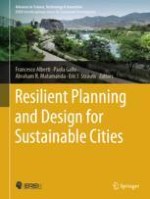2024 | OriginalPaper | Buchkapitel
Depopulation as a Way to Saturate the Various Urban Structure’s Inherent Deficits? Case of the Post-war Solitary Housing Estates
verfasst von : Jiří Mika, Markéta Káňová
Erschienen in: Resilient Planning and Design for Sustainable Cities
Verlag: Springer Nature Switzerland
Aktivieren Sie unsere intelligente Suche, um passende Fachinhalte oder Patente zu finden.
Wählen Sie Textabschnitte aus um mit Künstlicher Intelligenz passenden Patente zu finden. powered by
Markieren Sie Textabschnitte, um KI-gestützt weitere passende Inhalte zu finden. powered by
